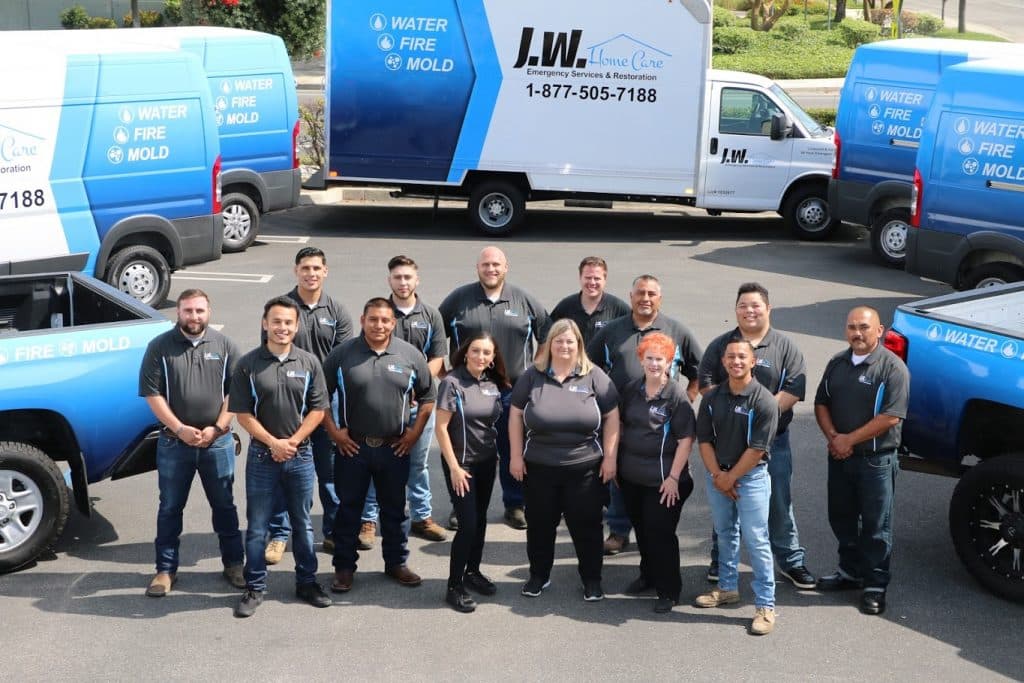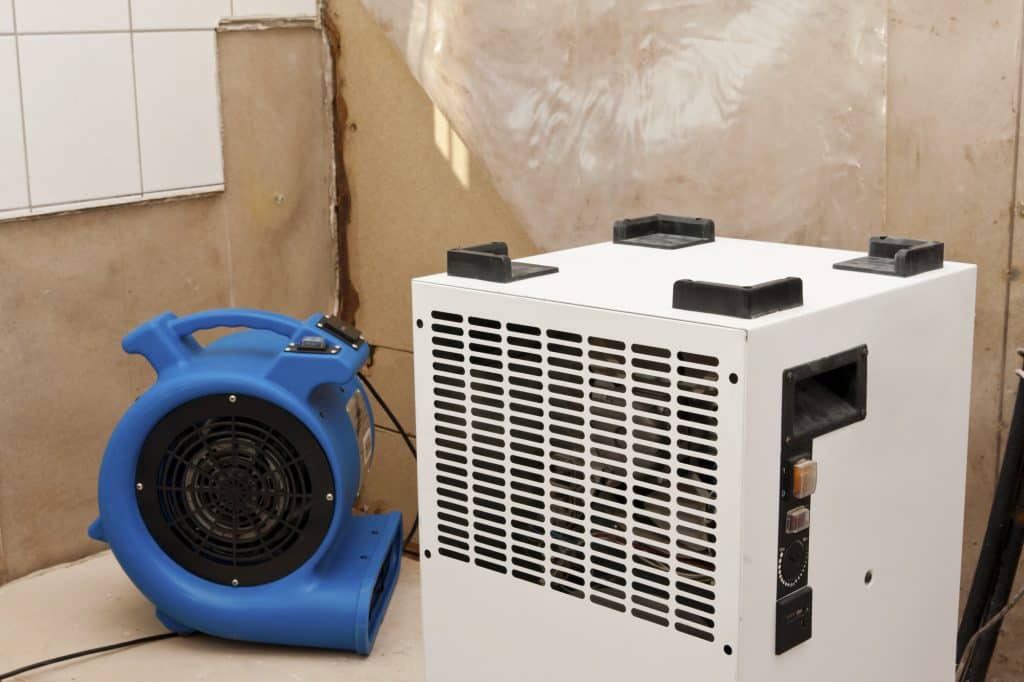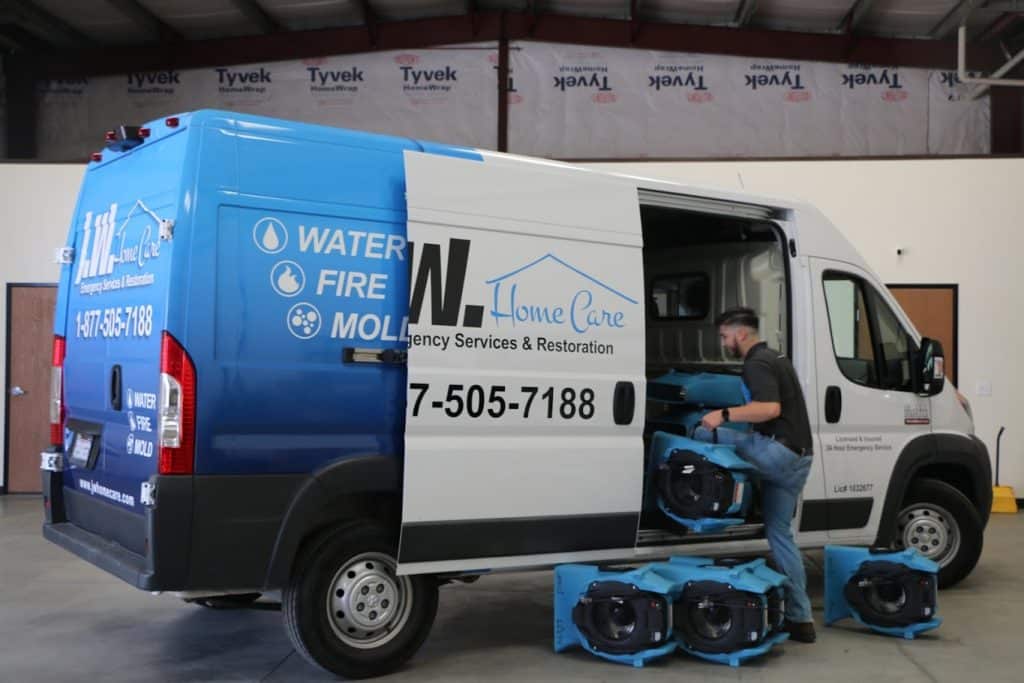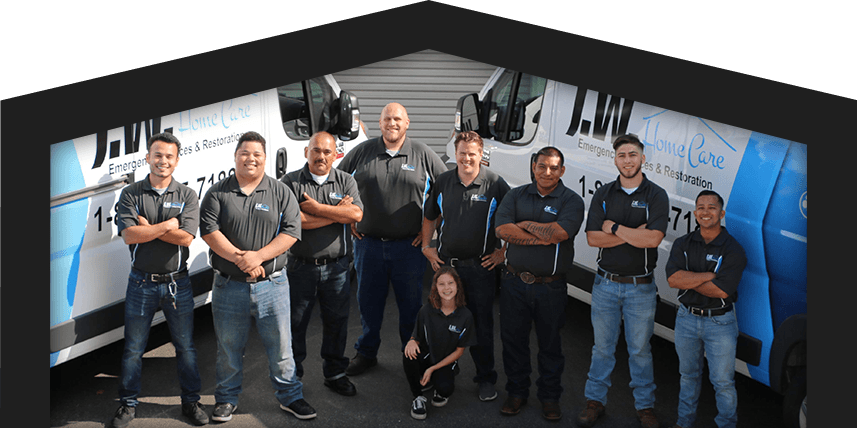
Know Your Rights As A
California Homeowner
You Have Significant Rights As A Homeowner!
You have significant rights as a homeowner or policy holder and deserve to know all of your options. Being prepared and knowing how to handle an emergency involving the preservation of your property will greatly benefit both your peace of mind and your wallet. Let’s dive into the 6 Initial First Steps a homeowner should be aware of when dealing with a sudden and accidental loss.
Step 1– Try to pinpoint what is causing the damage and attempt to rectify it, if you can.
Step 2– Your next move should be to contact a reputable Emergency Restoration company. A local company who is based in and services your area are more likely to respond the fastest.
Step 3– While waiting for the professionals, this would be the best time to secure important personal items such as heirlooms, jewelry, firearms, documents and precious family photos. Store these items out of harm’s way allowing you to concentrate on the project at hand.
Step 4– Feel free to take photos of the damage. Visual documentation will come in handy should you need to provide information to your insurance or keep for personal reference.
Step 5– Jotting down notes of any information you receive from the restoration company while they inspect would also be worth your while. Be sure to include the date, the cause of loss, the areas of the property that are affected, and any extra details unique to your loss.
Step 6– Open an Insurance Claim. (This step is optional and will vary depending on the situation.) You’ll want to contact your insurance to determine if the loss is covered. Once coverage is determined, you’ll receive a claim number and be appointed an adjuster that will handle all aspects of your claim. Be sure to keep this info handy and see The Claims Process and Communication is Key for more information regarding insurance claims.

The Claims Process
You’ve just experienced a major loss to your home or property, visible damage is staring you straight in the eye and you know you need help. Dictated by the cause of loss, your insurance may swoop in to save the day, or in unfortunate cases, may leave you to handle it on your own to pay for the restoration out of your own pocket. The Claims Process can be overwhelming, frustrating, or the best experience you’ve ever thought could occur from a terrible event.
As a company that has been helping our community and neighbors for over a decade, we’ve come to know the Claims Process all too well. We’ve seen everything from great recovery of major disasters like the very recent wildfires that spread throughout Ventura County, to mishandled claims that weren’t settled correctly within that very same wildfire event. The purpose of our work is to help homeowners and property owners when an emergency strikes. Aside from physically fixing structure damage, we yearn to help our community through knowledge as well.
5 Basic Steps Involved In The Claims Process & Helpful Tips
- Damage occurs. Emergency Professionals contain and restore initial damage on site. Documentation is captured of the loss.
Be sure to choose an Emergency Restoration company that will gladly explain and answer any questions you may have regarding the work they suggest once on-site.
- Open a claim. Homeowner contacts insurance and receives claim info such as whether their policy will cover the damage, claim number, adjuster point of contact, etc.
Keep all info regarding your claim easily accessible and backed up. You will need to refer to the claim info multiple times throughout the claims process.
- Game plan takes action. Restorers will use industry standards to cease damage, remove non-salvageable materials, and ready the home for rebuild. Personal items and furniture may need to be packed and stored for the restoration process to occur. Pack Out, as it is referred to, may take place prior to any demolition. Restorers invoice insurance once their service is completed.
A Pack Out is typically covered under your insurance and performed by the Restoration Company. If the restoration process involves limited to no access to your kitchen and/or bathroom, ask your adjuster about relocating while the work takes place in your home. Most policies cover ALE (Additional Living Expenses).
- Rebuilding the loss. Contractors evaluate rebuild costs with insurance to agree on the price it will take to recover the home to pre-loss condition.
Insurance may collect samples of the damaged material to match quality for cost replacement. This is a good thing. It ensures you will have the right amount paid out to you to replace what was damaged.

- Checks in the mail. After adjusters review each invoice of work completed, a settled amount is either mailed directly to the company who performed the job or to the Policy Holder to disperse out where necessary.
If you hold a mortgage, your insurance may endorse your mortgage company on the checks. In this instance, the mortgage will typically schedule an inspection before releasing funds to you or any hired contractor. This is done as a way to guarantee the work the insurance covered has been completed. Since the mortgage company is invested in the condition of your home, they want to make sure you’re keeping up with the needed repairs.
Communication Is Key!
Above all else, keeping a clear line of communication throughout the process of your claim will help in more ways than you’d think. Be sure to know your insurance adjuster assigned to the claim and their contact info, along with the basic knowledge of your loss. Keep all documentation from restorers, contractors and insurance handy should you need to reflect upon it.
Good communication, whether it be through text, email, or phone calls, will:
- Help ensure that your claim is processed in a timely manner and settled fairly
- Keep adjusters accountable for following through with their part on the claim
- Give you peace of mind knowing what is to happen and when
- Allow you to reach out directly should you need questions answered
- Act as legitimate evidence in court should unfair settlement occur
- Keep you in control and in charge of your claim.
This is your home, and ultimately it’s up to you to make sure the damage and loss is rectified to pre-loss conditions. After all, it is the reason you pay for insurance coverage.
Additional Living Expenses

Typically, ALE kicks in when a major component to your home is unusable, inaccessible, or the environment is majorly disturbed. For those with serious health conditions, a particular change in environment can be life threatening. Most property insurance policies hold a certain amount to be allocated toward ALE for such emergencies. The ALE will cover costs to relocate to a hotel, Air B&B, or rental home. Rule of thumb is, if you are spending money on anything that you usually wouldn’t when living in your home, then ALE will help reimburse you for those expenses as they relate to your claim.
Some examples of expenses covered under ALE:
•Eating take out, since the hotel doesn’t have a kitchen and you’re unable to cook •Buying new clothing, since your clothes were damaged or are in the process of being restored
•Boarding your pets, since the temporary housing you were provided does not allow pets
Remember to save your receipts during this time and always check with your adjuster if you’re questionable on what will be covered under ALE. It’s important to note, ALE does come with a cap and funds can run out if rebuild projects carry on longer than expected. Your adjuster will be able to tell you exactly what is covered and for how long so you may plan accordingly. In addition, you have the right to choose where you’d like to temporarily live and are allowed to seek out a place that fits your lifestyle and needs. Accommodating your temporary housing to your needs benefits both you and your insurance. You’ll be in a place similar to the comforts of home and insurance won’t have to dish out extra ALE for food, pets, commuting, etc.
Hiring Professional Help
Along the way, should you ever find the claims process overly time consuming and/or the claim pay out unfair to meeting contractor bids, you may want to seek professional help in the form of a Public Adjuster. A reputable, experienced, Public Adjuster (PA) will help document losses, they will file the claim, and make sure a proper insurance settlement is granted. Essentially, hiring a Public Adjuster means you have someone on your side who knows the insurance world. This in turn makes the claims process easier by having someone communicate with your insurance on your behalf to overall rectify your losses to your property.
Of course hiring this type of professional does come at a cost. Most PA’s will work your claim from beginning to end with the guarantee that you will pay them a percentage of what they’ve recovered for you on your claim. This may seem like a hefty fee in certain cases, however, when you think about what settlement you would receive without them, they become well worth the price. Some policyholders have even declared that Public Adjusters basically pay for themselves. It’s worth looking into if you feel your insurance hasn’t been completely fair in indemnifying your loss.
California Law specifies that your insurance cannot suggest or recommend that you have your property repaired by a specific individual or entity, unless you expressly request a referral, or are, first give your rights in writing to hire any contractor of your choice to perform the necessary tasks in restoring your home. Cal. Code Regs. tit. 10 § 2695.9
The very reason this law exists is to provide complete freedom of choice when it comes to who to hire. Some insurance companies will try to pressure their policyholders into hiring their preferred vendor without letting them know their options. This tactic is unfortunately used often to convince the policyholder that since their insurance is paying for the work to be done, they have to allow the company they promote to work on their home.

Fact of the matter is, Preferred Vendors are sent by the insurance company. This means these companies have agreed that they will do as the insurance says in order to get paid. Independent Restoration Companies do not hold obligations to insurance and work specifically for the homeowner. In healthcare terms, would you seek out the best qualified surgeon for the job or rely on your insurance to set you up with one? The choice is yours.
What’s The Difference Between JW Home Care and Who The Insurance Company Sends?
There are so many great Emergency Restoration companies out there, who train their techs properly, follow industry standards, and take customer service seriously. Yet there are even more Emergency Restoration companies out there that are in it for the wrong reasons. We’re not here to point fingers nor are we saying anyone’s better. The point of this article is to inform the general public of the following key facts so you may be better prepared to handle your property damage.
•Preferred Vendors receive their work through insurance companies usually in exchange for discounted work
•Independent Restoration Companies (Us) seek their customers through reputation and recommendations
•Preferred Vendors must adhere to the insurance adjuster’s scope of work in order to receive payment for their services and future work. This may be problematic as the adjuster calling the shots may not be on site, nor have IICRC certifications
•Independent Restoration Companies (Us) will follow a scope of work mandated by the IICRC industry standards (The IICRC is the 3rd party institute that educates, certifies, and leads the industry with guidelines and standards related to property restoration)
Frequently Asked Questions from Homeowners:
Q: Who do I call first when I’ve just experienced water damage in my home?
A: The emergency professionals, aka, your locally trusted restoration experts!
When you’ve just been in a major car accident, you typically don’t call your insurance agent to file a claim before calling an emergency professional, such as Police, Fire, or Ambulatory. The exact same goes for incidents to your vested property. Call a 24-hour restoration expert, like JW Home Care, to stop the damage to your property first and foremost. As soon as everything’s under control, it’s suggested to then open a claim with your insurance as you now have complete information to document your loss with your insurance company. Everyone benefits by calling a restoration expert first under a true emergency. It will save the insurance money by lessening the extent of the damage, it will get you back to pre-loss condition faster since there will be less damage to rectify, and in some cases you may even discover the damage being less detrimental than you had initially thought which would result in not even needing to open a claim.
Q: Do I have to use the Preferred Vendor that my insurance is suggesting?
A: No. Legally, you have the right to choose whom you’d like to restore and rebuild your home to pre-loss condition.
Q: What if my insurance adjuster says they won’t pay for the work that has already been done?
A: Review your policy, make sure your loss is considered a covered claim, and ask to speak with your adjuster’s supervisor for a more immediate turnaround. Varying state to state, there are timeframes that claim review and payment must follow. In certain cases, you may need to seek out a Public Adjuster to help rectify the situation.
Q: How does the restoration company get paid?
A: Either from the Insurance or the Home/Property Owner. When a claim is filed under insurance, the restoration company will be compensated through insurance for the work performed. When a homeowner hires a restoration company without filing a claim, they then take the responsibility of paying for services rendered. There are instances where a claim is opened then later gets denied coverage. In this case, payment for any work done falls back onto the responsibility of the homeowner.
Q: Is there a pricing guideline that restores must follow?
A: Yes and No. There is a computer pricing program that restoration companies can opt to pay to use. The program is backed by insurance companies and a preferred method of invoicing according to adjusters. Using a program that determines pricing based on location and current values benefits the customer and the insurance by keeping billing costs to a fair amount across the board. However, there are unique instances where services performed are not listed in the program or the loss was so large itemizing each detail would consume unnecessary labor costs. Billing outside of the program is considered billing as “Time and Materials.” This covers all labor and materials used to get the job done. In the end, a restoration company can submit their invoice to insurance in any form they desire. The insurance will then review the invoice, usually comparing it to the preferred program pricing to determine a fair amount to settle on.
Q: Can I cease working with the Insurance Preferred Vendor even if the job is half done?
A: Yes. Policyholders hold the right to have their home or property taken care of the right way. Should you ever find yourself unhappy with the service that is provided from the company performing a job in your home, you are completely allowed to stop working with that company and hire another to carry out the remainder of the job. This doesn’t happen very often, yet we do experience being sought out to re-do jobs that have been improperly restored by many preferred vendors.
We want to hear from you!
See anything that sparks a question or want to find out how we can help you with your unique claim? Contact us by text, email or a good ol’ phone call!


Do You Need Help or Have Questions?
Our Team Is Here To Support You From Damage Restoration To Insurance Claim Assistance You Can Count On Us


